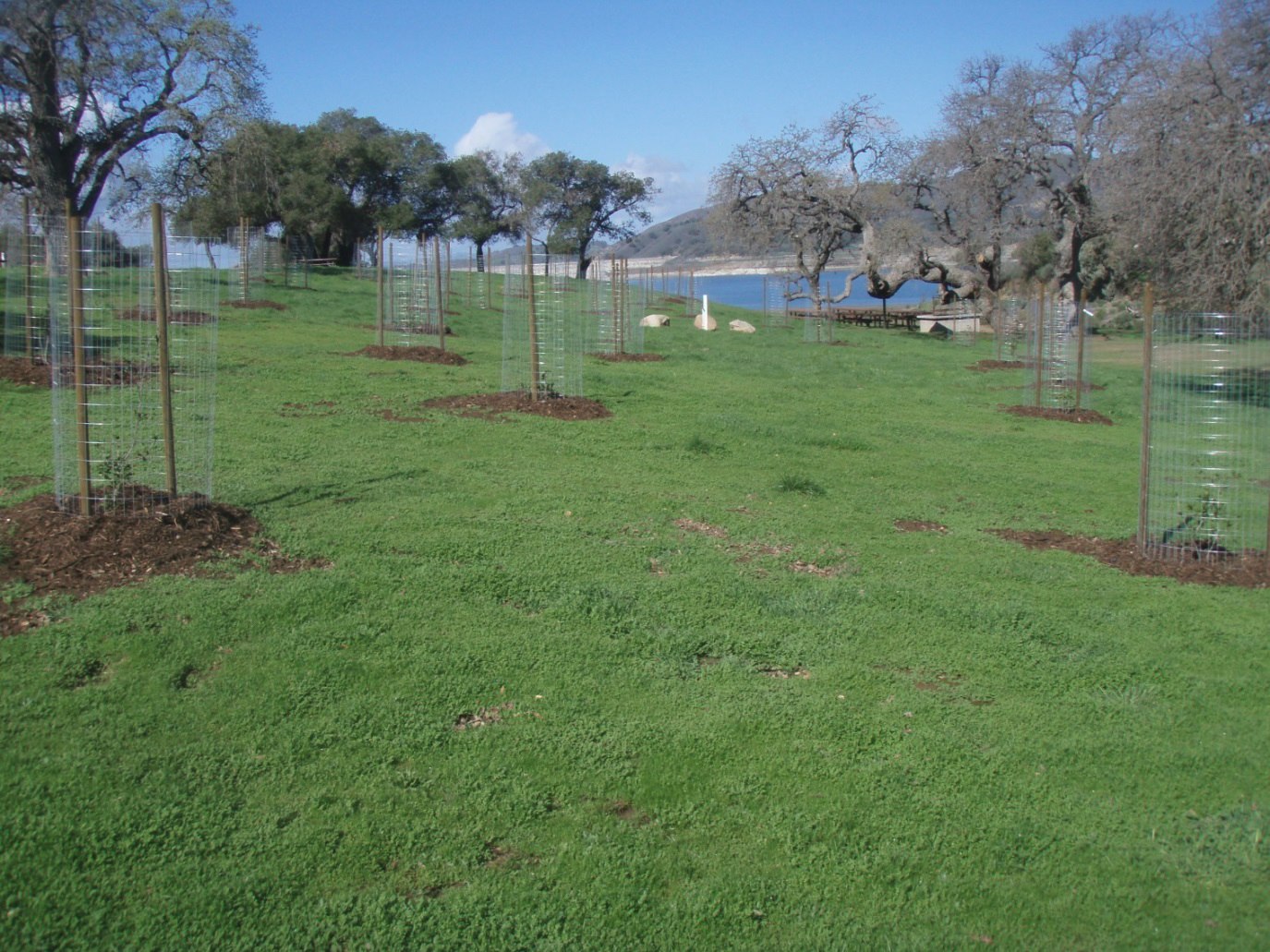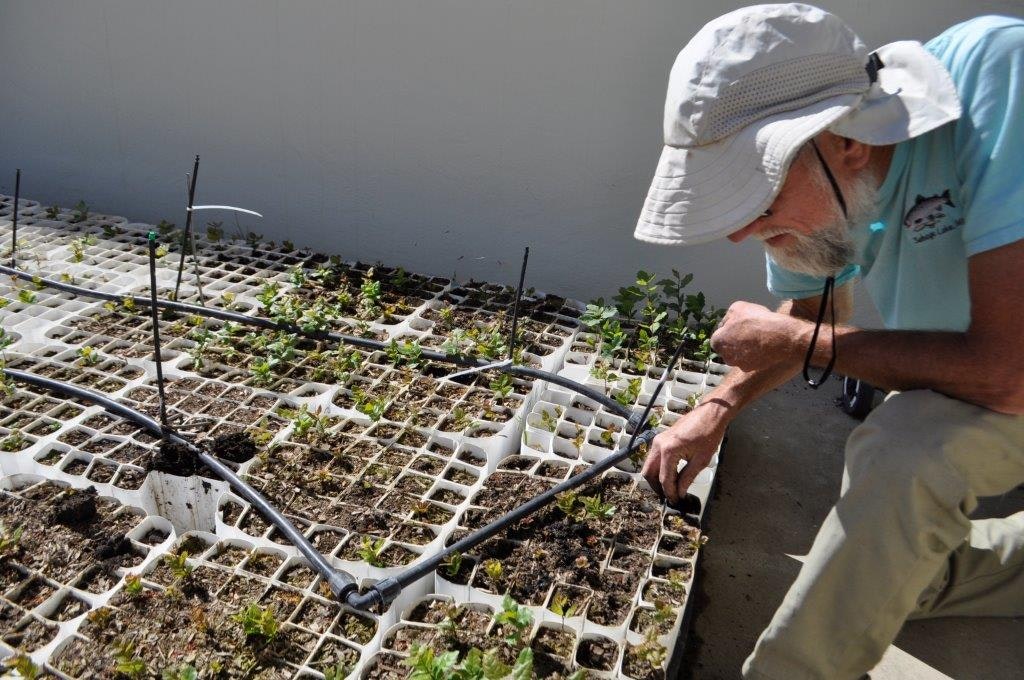Oak Tree Restoration Program
About the Program

In 2004, the Bradbury Dam radial gates that retain the water in Lake Cachuma were raised by four feet to provide additional water for the downstream fisheries. When there is sufficient rainfall and runoff to fill and spill Lake Cachuma, the extra stored water is used to provide additional river flows that help steelhead migrate to and from the ocean. Surcharging Lake Cachuma helps balance benefits for people and the environment.
However, the periodic rise in lake levels caused by surcharging affect the oak woodlands that occur along the margins of Lake Cachuma. An Oak Tree Restoration Program was developed to mitigate for projected oak tree losses. The implementation of the plan is incremental and spread over several years. This allows for a phased restoration program so that adaptive management can be taken to refine and improve restoration methods over time to increase the success rate.
Details of the Program
The Lower Santa Ynez River Fish Management Plan and Cachuma Project Biological Opinion EIR/EIS Fish Management and Environmental documents concluded that about 452 Oak trees may potentially be affected by surcharging of Lake Cachuma. Meetings and discussions were held with the Santa Barbara County Planning Department early on during the early preparation of the Fish Management and Environmental documents, and every effort was made to incorporate the County's suggested changes to the mitigation plan to assure that it was consistent with the County's oak tree mitigation requirements county-wide. In addition, a Memorandum of Understanding was entered into between the County Parks Department, CCRB and Santa Ynez River Water Conservation District ID No. 1 which included the County as a partner for this oak tree program.
A projected possible loss of up to 900 coast live oak and valley oak trees is being mitigated in a phased program. The initial planting ratio is 5:1 or 4,500 trees, but the final number will be adjusted as necessary based on observed mortality.
The phased approach entails planting the number of oaks required to offset half of the expected losses, which will be 2,250 trees, over a six year period. Hence, 375 oak trees will be planted per year for six years. For the next ten years, the loss of trees along the shoreline will be monitored. Replacement trees that do not survive will be replaced on an annual basis. At year 10, the number of oak trees around the perimeter of the lake that do not appear healthy and are expected to perish in the future, will be counted and replaced (using the appropriate replacement ratio), and the monitoring of tree loss along the shoreline will terminate. For years 10-20, all planted trees will be maintained and monitored. At year 20, a final count will be performed to determine if a sufficient number of self-sustaining trees are present to offset the observed tree loss at a 2:1 ratio.










Project Location
The initial Planting Plan identified planting locations within the public boundaries of the County's Lake Cachuma Park. Restoration sites outside the park were also explored for future plantings. However, the Cachuma Member Units and the County were concerned that newly planted oaks trees would be at a substantially greater risk of damage by the recreating public if the trees were installed within the Park. Therefore, after discussions with the County Parks personnel, it was agreed that as many oak trees as possible should be planted in a non-public area of the Cachuma Recreation Area to achieve maximum survivability of the young oak trees.
Annual Reports
2022 Annual Oak Tree Restoration Program Report.pdf2021 Annual Oak Tree Restoration Program Report.pdf2020 Annual Oak Tree Restoration Program Report.pdf2019 Annual Oak Tree Restoration Program Report.pdf2018 Annual Oak Tree Restoration Program Report.pdf2017 Annual Oak Tree Restoration Program Report.pdf2016 Annual Oak Tree Restoration Program Report.pdf2015 Annual Oak Tree Restoration Program Report.pdf
